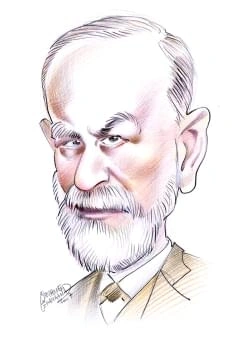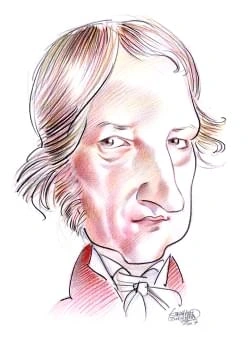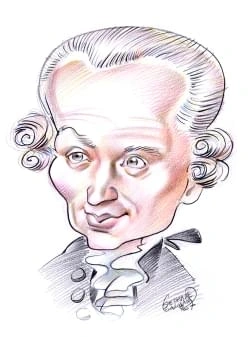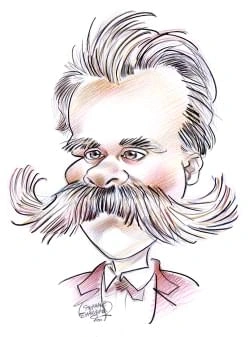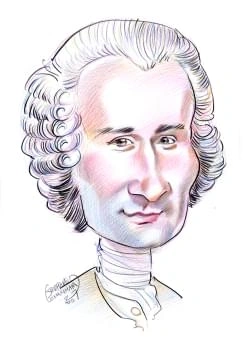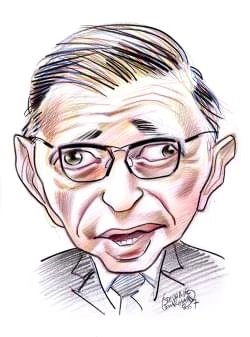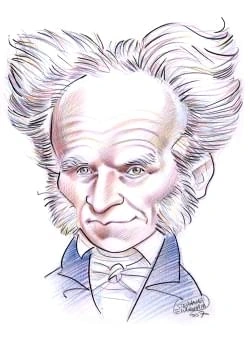339 résultats pour "students"
-
Switzerland Facts and Figures.
Other 1 percent LanguagesGerman (official), French (official), Italian (official), Romansch, English, and others NOTE: Romansch, a Romance language, is spoken by less than 1 percent of the Swiss population, chiefly in the canton of Graubünden. Religious affiliationsRoman Catholic 44 percent Protestant 41 percent Muslim 3 percent Nonreligious 7 percent Other 5 percent HEALTH AND EDUCATIONLife expectancy Total 80.7 years (2008 estimate) Female 83.7 years (2008 estimate) Male 7...
-
Syria Facts and Figures.
Total 70.9 years (2008 estimate) Female 72.3 years (2008 estimate) Male 69.5 years (2008 estimate) Infant mortality rate 27 deaths per 1,000 live births (2008 estimate) Population per physician 1,887 people (2006) Population per hospital bed 667 people (2003) Literacy rateTotal 78.4 percent (2005 estimate) Female 66.1 percent (2005 estimate) Male 90.6 percent (2005 estimate) Education expenditure as a share of gross national product (GNP) 4.2 percent (2001-2002) Number of years...
-
Bahrain Facts and Figures.
HEALTH AND EDUCATIONLife expectancy Total 74.9 years (2008 estimate) Female 77.5 years (2008 estimate) Male 72.4 years (2008 estimate) Infant mortality rate 16 deaths per 1,000 live births (2008 estimate) Population per physician 920 people (2004) Population per hospital bed 357 people (2003) Literacy rateTotal 90 percent (2005 estimate) Female 86.4 percent (2005 estimate) Male 92.6 percent (2005 estimate) Education expenditure as a share of gross national product (GNP) 3.1 pe...
-
Vietnam Facts and Figures.
HEALTH AND EDUCATIONLife expectancy Total 71.3 years (2008 estimate) Female 74.3 years (2008 estimate) Male 68.5 years (2008 estimate) Infant mortality rate 24 deaths per 1,000 live births (2008 estimate) Population per physician 1,871 people (2004) Population per hospital bed 417 people (2001) Literacy rateTotal 94.4 percent (2005 estimate) Female 92.9 percent (2005 estimate) Male 96 percent (2005 estimate) Education expenditure as a share of gross national product (GNP) 3 pe...
-
Norway Facts and Figures.
Infant mortality rate 4 deaths per 1,000 live births (2008 estimate) Population per physician 265 people (2006) Population per hospital bed 263 people (2000) Literacy rateTotal 99 percent (1995) Female Not available Male Not available Education expenditure as a share of gross national product (GNP) 7.6 percent (2002-2003) Number of years of compulsory schooling 11 years (2002-2003) Number of students per teacher, primary school 10 students per teacher (2002-2003) GOVERNMENTForm of g...
-
Germany Facts and Figures.
Nonreligious 17 percent Other 7 percent HEALTH AND EDUCATIONLife expectancy Total 79.1 years (2008 estimate) Female 82.3 years (2008 estimate) Male 76.1 years (2008 estimate) Infant mortality rate 4 deaths per 1,000 live births (2008 estimate) Population per physician 291 people (2006) Population per hospital bed 112 people (2002) Literacy rateTotal 99 percent (1995) Female Not available Male Not available Education expenditure as a share of gross national product (GNP) 4...
-
Italy Facts and Figures.
Population per hospital bed 227 people (2002) Literacy rateTotal 98.8 percent (2005 estimate) Female 98.4 percent (2005 estimate) Male 99.1 percent (2005 estimate) Education expenditure as a share of gross national product (GNP) 4.8 percent (2002-2003) Number of years of compulsory schooling 9 years (2001-2002) Number of students per teacher, primary school 11 students per teacher (2002-2003) GOVERNMENTForm of government Republic Head of state President Head of government Prime mini...
-
Canada Facts and Figures.
English (official), French (official), Chinese, Italian, Punjabi, Spanish, indigenous languages Religious affiliationsRoman Catholic 43 percent No religion 16 percent United Church 10 percent Anglican 7 percent Baptist 3 percent Lutheran 2 percent Other 19 percent HEALTH AND EDUCATIONLife expectancy Total 80.5 years (2008 estimate) Female 84 years (2008 estimate) Male 77.1 years (2008 estimate) Infant mortality rate 5 deaths per 1,000 live births (2008 estimate) Populat...
-
-
Turkey Facts and Figures.
Male 70.7 years (2008 estimate) Infant mortality rate 37 deaths per 1,000 live births (2008 estimate) Population per physician 641 people (2006) Population per hospital bed 385 people (2005) Literacy rateTotal 87.6 percent (2005 estimate) Female 80.1 percent (2005 estimate) Male 94.9 percent (2005 estimate) Education expenditure as a share of gross national product (GNP) 3.6 percent (2002-2003) Number of years of compulsory schooling 9 years (2002-2003) Number of students per teac...
-
Japan Facts and Figures.
Total 82.1 years (2008 estimate) Female 85.6 years (2008 estimate) Male 78.7 years (2008 estimate) Infant mortality rate 3 deaths per 1,000 live births (2008 estimate) Population per physician 497 people (2004) Population per hospital bed 70 people (2003) Literacy rateTotal 99 percent (1995) Female 99 percent (1993 estimate) Male 99 percent (1993 estimate) Education expenditure as a share of gross national product (GNP) 3.5 percent (2000-2001) Number of years of compulsory scho...
-
Argentina Facts and Figures.
Female 80.4 years (2008 estimate) Male 72.8 years (2008 estimate) Infant mortality rate 14 deaths per 1,000 live births (2008 estimate) Population per physician 332 people (2004) Population per hospital bed 244 people (2000) Literacy rateTotal 97.2 percent (2005 estimate) Female 97.3 percent (2005 estimate) Male 97.2 percent (2005 estimate) Education expenditure as a share of gross national product (GNP) 4.3 percent (2002-2003) Number of years of compulsory schooling 10 years (20...
-
South Korea Facts and Figures.
Female 81.1 years (2008 estimate) Male 74 years (2008 estimate) Infant mortality rate 6 deaths per 1,000 live births (2008 estimate) Population per physician 554 people (2004) Population per hospital bed 141 people (2003) Literacy rateTotal 98.4 percent (2005 estimate) Female 97.4 percent (2005 estimate) Male 99.3 percent (2005 estimate) Education expenditure as a share of gross national product (GNP) 4.2 percent (2002-2003) Number of years of compulsory schooling 9 years (2002-2...
-
Australia Facts and Figures.
HEALTH AND EDUCATIONLife expectancy Total 80.7 years (2008 estimate) Female 83.8 years (2008 estimate) Male 77.9 years (2008 estimate) Infant mortality rate 5 deaths per 1,000 live births (2008 estimate) Population per physician 401 people (2004) Population per hospital bed 135 people (2002) Literacy rateTotal 100 percent (1995) Female Not available Male Not available Education expenditure as a share of gross national product (GNP) 5 percent (2002-2003) Number of years of com...
-
United States Facts and Figures.
HEALTH AND EDUCATIONLife expectancy Total 78.1 years (2008 estimate) Female 81.1 years (2008 estimate) Male 75.3 years (2008 estimate) Infant mortality rate 6 deaths per 1,000 live births (2008 estimate) Population per physician 375 people (2005) Population per hospital bed 370 people (2005) Literacy rateTotal 99.5 percent (1995) Female Not available Male Not available Education expenditure as a share of gross national product (GNP) 4.9 percent (2000-2001) Number of years of...
-
Belgium Facts and Figures.
Muslims 4 percent Nonreligious 6 percent Other 8 percent HEALTH AND EDUCATIONLife expectancy Total 79.1 years (2008 estimate) Female 82.4 years (2008 estimate) Male 75.9 years (2008 estimate) Infant mortality rate 5 deaths per 1,000 live births (2008 estimate) Population per physician 236 people (2006) Population per hospital bed 145 people (2002) Literacy rateTotal 99 percent (1995) Female Not available Male Not available Education expenditure as a share of gross natio...
-
Zimbabwe Facts and Figures.
HEALTH AND EDUCATIONLife expectancy Total 39.7 years (2008 estimate) Female 38.5 years (2008 estimate) Male 40.9 years (2008 estimate) Infant mortality rate 51 deaths per 1,000 live births (2008 estimate) Population per physician 6,199 people (2004) Population per hospital bed 1,959 people (1990) Literacy rateTotal 91.9 percent (2005 estimate) Female 88.7 percent (2005 estimate) Male 95.1 percent (2005 estimate) Education expenditure as a share of gross national product (GNP)...
-
-
Thailand Facts and Figures.
HEALTH AND EDUCATIONLife expectancy Total 72.8 years (2008 estimate) Female 75.3 years (2008 estimate) Male 70.5 years (2008 estimate) Infant mortality rate 18 deaths per 1,000 live births (2008 estimate) Population per physician 3,324 people (2004) Population per hospital bed 455 people (1999) Literacy rateTotal 96.4 percent (2005 estimate) Female 95.1 percent (2005 estimate) Male 97.7 percent (2005 estimate) Education expenditure as a share of gross national product (GNP) 5....
-
Colombia Facts and Figures.
Other 1 percent HEALTH AND EDUCATIONLife expectancy Total 72.5 years (2008 estimate) Female 76.5 years (2008 estimate) Male 68.7 years (2008 estimate) Infant mortality rate 20 deaths per 1,000 live births (2008 estimate) Population per physician 741 people (2004) Population per hospital bed 909 people (2003) Literacy rateTotal 93 percent (2005 estimate) Female 93.1 percent (2005 estimate) Male 92.9 percent (2005 estimate) Education expenditure as a share of gross national p...
-
Tanzania Facts and Figures.
HEALTH AND EDUCATIONLife expectancy Total 51.5 years (2008 estimate) Female 52.9 years (2008 estimate) Male 50.1 years (2008 estimate) Infant mortality rate 71 deaths per 1,000 live births (2008 estimate) Population per physician 44,133 people (2004) Population per hospital bed 1,123 people (1992) Literacy rateTotal 80.2 percent (2005 estimate) Female 73.4 percent (2005 estimate) Male 87.2 percent (2005 estimate) Education expenditure as a share of gross national product (GNP)...
-
New Zealand Facts and Figures.
Other (including Jewish and Hindu) 28 percent HEALTH AND EDUCATIONLife expectancy Total 79.1 years (2008 estimate) Female 82.2 years (2008 estimate) Male 76.1 years (2008 estimate) Infant mortality rate 6 deaths per 1,000 live births (2008 estimate) Population per physician 449 people (2004) Population per hospital bed 164 people (2002) Literacy rateTotal 99 percent (1995) Female Not available Male Not available Education expenditure as a share of gross national product (GN...
-
Mexico Facts and Figures.
HEALTH AND EDUCATIONLife expectancy Total 75.8 years (2008 estimate) Female 78.8 years (2008 estimate) Male 73 years (2008 estimate) Infant mortality rate 19 deaths per 1,000 live births (2008 estimate) Population per physician 583 people (2004) Population per hospital bed 1,000 people (2003) Literacy rateTotal 92.7 percent (2005 estimate) Female 91.2 percent (2005 estimate) Male 94.4 percent (2005 estimate) Education expenditure as a share of gross national product (GNP) 5.4...
-
Egypt Facts and Figures.
Infant mortality rate 28 deaths per 1,000 live births (2008 estimate) Population per physician 472 people (2004) Population per hospital bed 455 people (2003) Literacy rateTotal 59.3 percent (2005 estimate) Female 48.9 percent (2005 estimate) Male 69.4 percent (2005 estimate) Education expenditure as a share of gross national product (GNP) 4.1 percent (1999-2000) Number of years of compulsory schooling 8 years (2002-2003) Number of students per teacher, primary school 22 students per...
-
Spain Facts and Figures.
Other 3 percent HEALTH AND EDUCATIONLife expectancy Total 79.9 years (2008 estimate) Female 83.5 years (2008 estimate) Male 76.6 years (2008 estimate) Infant mortality rate 4 deaths per 1,000 live births (2008 estimate) Population per physician 313 people (2004) Population per hospital bed 263 people (2003) Literacy rateTotal 98.1 percent (2005 estimate) Female 97.4 percent (2005 estimate) Male 98.8 percent (2005 estimate) Education expenditure as a share of gross national...
-
Kuwait Facts and Figures.
Other 2 percent HEALTH AND EDUCATIONLife expectancy Total 77.5 years (2008 estimate) Female 78.7 years (2008 estimate) Male 76.4 years (2008 estimate) Infant mortality rate 9 deaths per 1,000 live births (2008 estimate) Population per physician 656 people (2004) Population per hospital bed 455 people (2002) Literacy rateTotal 84.4 percent (2005 estimate) Female 82.9 percent (2005 estimate) Male 85.8 percent (2005 estimate) Education expenditure as a share of gross national...
-
-
Austria Facts and Figures.
HEALTH AND EDUCATIONLife expectancy Total 79.4 years (2008 estimate) Female 82.4 years (2008 estimate) Male 76.5 years (2008 estimate) Infant mortality rate 5 deaths per 1,000 live births (2008 estimate) Population per physician 273 people (2006) Population per hospital bed 121 people (2003) Literacy rateTotal 99 percent (1995) Female Not available Male Not available Education expenditure as a share of gross national product (GNP) 5.8 percent (2002-2003) Number of years of co...
-
Chile Facts and Figures.
Other 10 percent HEALTH AND EDUCATIONLife expectancy Total 77.2 years (2008 estimate) Female 80.6 years (2008 estimate) Male 73.9 years (2008 estimate) Infant mortality rate 8 deaths per 1,000 live births (2008 estimate) Population per physician 916 people (2004) Population per hospital bed 385 people (2002) Literacy rateTotal 96.5 percent (2005 estimate) Female 96.4 percent (2005 estimate) Male 96.6 percent (2005 estimate) Education expenditure as a share of gross national...
-
Venezuela Facts and Figures.
HEALTH AND EDUCATIONLife expectancy Total 73.5 years (2008 estimate) Female 76.7 years (2008 estimate) Male 70.4 years (2008 estimate) Infant mortality rate 22 deaths per 1,000 live births (2008 estimate) Population per physician 516 people (2004) Population per hospital bed 1,250 people (2001) Literacy rateTotal 94 percent (2005 estimate) Female 93.8 percent (2005 estimate) Male 94.2 percent (2005 estimate) Education expenditure as a share of gross national product (GNP) 5.2...
-
Nigeria Facts and Figures.
Male 47.1 years (2008 estimate) Infant mortality rate 94 deaths per 1,000 live births (2008 estimate) Population per physician 3,715 people (2004) Population per hospital bed 599 people (1990) Literacy rateTotal 70.7 percent (2005 estimate) Female 63.8 percent (2005 estimate) Male 77.8 percent (2005 estimate) Education expenditure as a share of gross national product (GNP) 0.7 percent (1999-2000) Number of years of compulsory schooling 9 years (2002-2003) Number of students per te...
-
Malaysia Facts and Figures.
Other 6 percent HEALTH AND EDUCATIONLife expectancy Total 73 years (2008 estimate) Female 75.9 years (2008 estimate) Male 70.3 years (2008 estimate) Infant mortality rate 16 deaths per 1,000 live births (2008 estimate) Population per physician 1,425 people (2004) Population per hospital bed 526 people (2001) Literacy rateTotal 89.9 percent (2005 estimate) Female 86.8 percent (2005 estimate) Male 93 percent (2005 estimate) Education expenditure as a share of gross national p...
-
China Facts and Figures.
Other 34 percent HEALTH AND EDUCATIONLife expectancy Total 73.2 years (2008 estimate) Female 75.2 years (2008 estimate) Male 71.4 years (2008 estimate) Infant mortality rate 21 deaths per 1,000 live births (2008 estimate) Population per physician 662 people (2005) Population per hospital bed 408 people (2005) Literacy rateTotal 87.3 percent (2005 estimate) Female 80.6 percent (2005 estimate) Male 93.7 percent (2005 estimate) Education expenditure as a share of gross nationa...
-
Israel Facts and Figures.
HEALTH AND EDUCATIONLife expectancy Total 79.7 years (2008 estimate) Female 82 years (2008 estimate) Male 77.6 years (2008 estimate) Infant mortality rate 7 deaths per 1,000 live births (2008 estimate) Population per physician 273 people (2006) Population per hospital bed 164 people (2003) Literacy rateTotal 96 percent (2005 estimate) Female 94.4 percent (2005 estimate) Male 97.6 percent (2005 estimate) Education expenditure as a share of gross national product (GNP) 7.8 perce...
-
Brazil Facts and Figures.
HEALTH AND EDUCATIONLife expectancy Total 72.5 years (2008 estimate) Female 76.6 years (2008 estimate) Male 68.6 years (2008 estimate) Infant mortality rate 27 deaths per 1,000 live births (2008 estimate) Population per physician 486 people (2004) Population per hospital bed 370 people (2002) Literacy rateTotal 87.1 percent (2005 estimate) Female 87.5 percent (2005 estimate) Male 86.7 percent (2005 estimate) Education expenditure as a share of gross national product (GNP) 4 pe...
-
-
Pakistan Facts and Figures.
HEALTH AND EDUCATIONLife expectancy Total 64.1 years (2008 estimate) Female 65.2 years (2008 estimate) Male 63.1 years (2008 estimate) Infant mortality rate 67 deaths per 1,000 live births (2008 estimate) Population per physician 1,353 people (2004) Population per hospital bed 1,429 people (2003) Literacy rateTotal 47.4 percent (2005 estimate) Female 32.4 percent (2005 estimate) Male 61.4 percent (2005 estimate) Education expenditure as a share of gross national product (GNP)...
-
Russia Facts and Figures.
Nonreligious 28 percent Other 7 percent HEALTH AND EDUCATIONLife expectancy Total 65.9 years (2008 estimate) Female 73.1 years (2008 estimate) Male 59.2 years (2008 estimate) Infant mortality rate 11 deaths per 1,000 live births (2008 estimate) Population per physician 232 people (2006) Population per hospital bed 95 people (2003) Literacy rateTotal 99.6 percent (2005 estimate) Female 99.6 percent (2005 estimate) Male 99.7 percent (2005 estimate) Education expenditure as...
-
Iran Facts and Figures.
Shiite Muslim 93 percent Sunni Muslim 6 percent Zoroastrian, Jewish, Christian, and Baha'i 1 percent HEALTH AND EDUCATIONLife expectancy Total 70.9 years (2008 estimate) Female 72.4 years (2008 estimate) Male 69.4 years (2008 estimate) Infant mortality rate 37 deaths per 1,000 live births (2008 estimate) Population per physician 2,223 people (2004) Population per hospital bed 625 people (2001) Literacy rateTotal 81.3 percent (2005 estimate) Female 75.2 percent (2005 estimate...
-
Saudi Arabia Facts and Figures.
Male 74 years (2008 estimate) Infant mortality rate 12 deaths per 1,000 live births (2008 estimate) Population per physician 727 people (2004) Population per hospital bed 455 people (2001) Literacy rateTotal 80.5 percent (2005 estimate) Female 73.3 percent (2005 estimate) Male 85.9 percent (2005 estimate) Education expenditure as a share of gross national product (GNP) 9.3 percent (1999-2000) Number of years of compulsory schooling 6 years (2002-2003) Number of students per teache...
-
Indonesia Facts and Figures.
Buddhist 1 percent Other 1 percent HEALTH AND EDUCATIONLife expectancy Total 70.5 years (2008 estimate) Female 73.1 years (2008 estimate) Male 68 years (2008 estimate) Infant mortality rate 31 deaths per 1,000 live births (2008 estimate) Population per physician 6,159 people (2004) Population per hospital bed 167 people (1998) Literacy rateTotal 89.5 percent (2005 estimate) Female 85.6 percent (2005 estimate) Male 93.6 percent (2005 estimate) Education expenditure as a sh...
-
France Facts and Figures.
Male 77.7 years (2008 estimate) Infant mortality rate 3 deaths per 1,000 live births (2008 estimate) Population per physician 293 people (2006) Population per hospital bed 130 people (2003) Literacy rateTotal 99 percent (1995) Female Not available Male Not available Education expenditure as a share of gross national product (GNP) 5.6 percent (2002-2003) Number of years of compulsory schooling 11 years (2002-2003) Number of students per teacher, primary school 19 students per teach...
-
Cyprus Facts and Figures.
Total 78.2 years (2008 estimate) Female 80.7 years (2008 estimate) Male 75.8 years (2008 estimate) Infant mortality rate 7 deaths per 1,000 live births (2008 estimate) Population per physician 30 people (2006) Population per hospital bed 227 people (2002) Literacy rateTotal 98 percent (2005 estimate) Female 96.9 percent (2005 estimate) Male 99.1 percent (2005 estimate) Education expenditure as a share of gross national product (GNP) 6.4 percent (2002-2003) Number of years of co...
-
Nashville - geography.
May event has grown into a major festival. In September the city hosts the Tennessee State Fair. One of Nashville's principle attractions is Opryland, a complex of entertainment and broadcasting facilities that offers live music shows, a resort and convention center,and shopping outlets. Since 1974 it has been the home to the Grand Ole Opry radio show, a country-music production that has not missed a broadcast since 1925. Percy Park and Edwin Warner Park provide open space, trails, playing field...
-
-
Suicide.
C Sociological Theories Most social scientists believe that a society’s structure and values can influence suicide rates. French sociologist Émile Durkheim argued that suicide rates are related tosocial integration —that is, the degree to which an individual feels part of a larger group. Durkheim found suicide was more likely when a person lacked social bonds or had relationships disrupted through a sudden change in status, such as unemployment. As one example of the significance of social bond...
-
Cuban Revolution.
Confederation of Labor, threw its support behind Batista. In the same month, the U.S. government cut off weapons sales to Batista’s government. U.S. envoys andpolitical moderates in Cuba tried to convince Batista to leave power peacefully, but Batista refused. Meanwhile, revolutionaries from Castro’s movement and from otherorganizations escalated violent resistance. During the second half of 1958, guerrillas seized ground in the countryside from the army. In the cities, several of Batista’sleadi...
-
Syria - country.
D Education Primary education is free and compulsory for all children aged 6 through 12. Some 78 percent of the adult Syrian population was estimated to be literate in 2005.Primary schools enrolled 2.8 million pupils in the 2000 school year, and 1.1 million students attended secondary schools and vocational institutes. In 1998, 94,110 Syrian students were enrolled in institutes of higher education. Syria has universities in Damascus, Ḩalab, Ḩim ş, and Al L ādhiq īyah. Also in Damascus isthe Ar...
-
Surgery.
III SURGICAL PROCEDURES Surgical procedures are classified as optional, required, elective, urgent, and emergent based on the patient’s medical condition. Optional surgery consists of operationsthat are not required but which the patient chooses to undergo as with some types of cosmetic surgery. Required surgery is performed when only surgery will correct aproblem—such as cataracts—but the surgery can be delayed for a period of weeks or months. Elective surgical procedures usually involve cond...
-
Libya - country.
junipers and mastic trees are found in the higher elevations. Only a few large mammals are found in Libya. Wildlife includes desert rodents, hyenas, gazelles, and wildcats. Eagles, hawks, and vultures are common. E Environmental Issues Libya has undertaken a number of major irrigation projects intended to ease the country’s water shortage. The most ambitious is the so-called Great Man-Made River(GMMR), a massive 25-year irrigation scheme begun in 1984. The GMMR is a vast water pipeline system d...
-
Czech Republic - country.
enforcement of environmental regulations. Environmental considerations have also led some government officials to promote nuclear energy as a key source of powerfor the country’s future. The Czech Republic produces most of its energy by burning domestic coal. Much of the coal burned is low quality with a high ash and sulfur content—a key componentof acid rain—producing high levels of air pollution. Forests in the Czech Republic are among the most seriously affected by acid rain in all of Europe....
-
Venezuela - country.
Venezuela has six navigable rivers. Of the thousand or more streams in the country, the majority flow into the Orinoco. The Orinoco flows east across central Venezuelaand drains approximately four-fifths of the total area of the country. With the tributaries—the Apure, Meta, and Negro rivers—it forms the outlet into the Atlantic Oceanfor the waters of much of the interior of Colombia, as well as of inland Venezuela. F Climate The climate of Venezuela is tropical on the Llanos and along the coas...
-
Turkmenistan - country.
A Ethnic Groups With Turkmens constituting 77 percent of the population, Turkmenistan is the most ethnically homogeneous of the Central Asian republics. Uzbeks make up the largestminority group, with about 9 percent of the population. Other ethnic groups include Russians, Kazakhs, Tatars, Ukrainians, Azeris (ethnic Azerbaijanis), Armenians, andBaluch. In 1993 a bilateral treaty between Turkmenistan and Russia granted dual citizenship to Russians in the republic. At the 1995 census Russians cons...
-
-
Vladimir Lenin
I
INTRODUCTION
Vladimir Lenin (1870-1924), Russian revolutionary leader and theorist, who presided over the first government of Soviet Russia and then that of the Union of Soviet
Socialist Republics (USSR).
with Japan ( see Russo-Japanese War). A string of military defeats and the strains placed on society by the war made for a tense atmosphere in Saint Petersburg, and by the beginning of 1905 various segments of Russian society, including students and liberal members of the nobility, were calling for political reform. When an unarmedcrowd of workers marched to the city’s Winter Palace on January 9 (or January 22, in the Western, or New Style, calendar) to submit a petition to Emperor Nicholas II,s...
-
Vladimir Lenin.
with Japan ( see Russo-Japanese War). A string of military defeats and the strains placed on society by the war made for a tense atmosphere in Saint Petersburg, and by the beginning of 1905 various segments of Russian society, including students and liberal members of the nobility, were calling for political reform. When an unarmedcrowd of workers marched to the city’s Winter Palace on January 9 (or January 22, in the Western, or New Style, calendar) to submit a petition to Emperor Nicholas II,s...
}})
